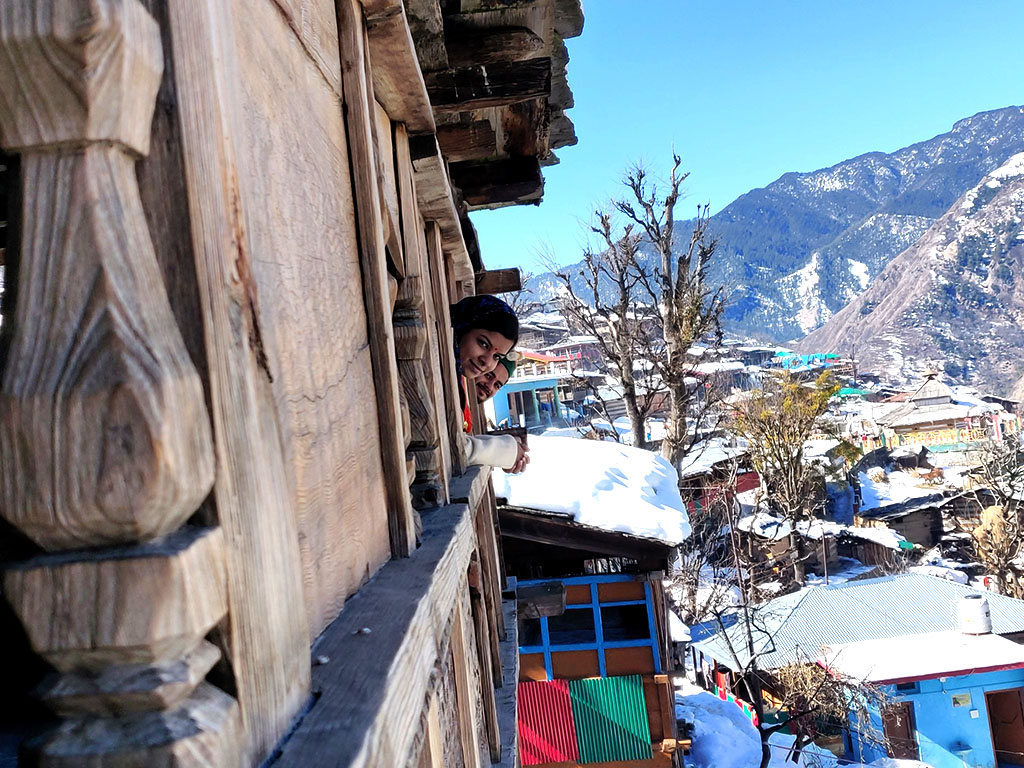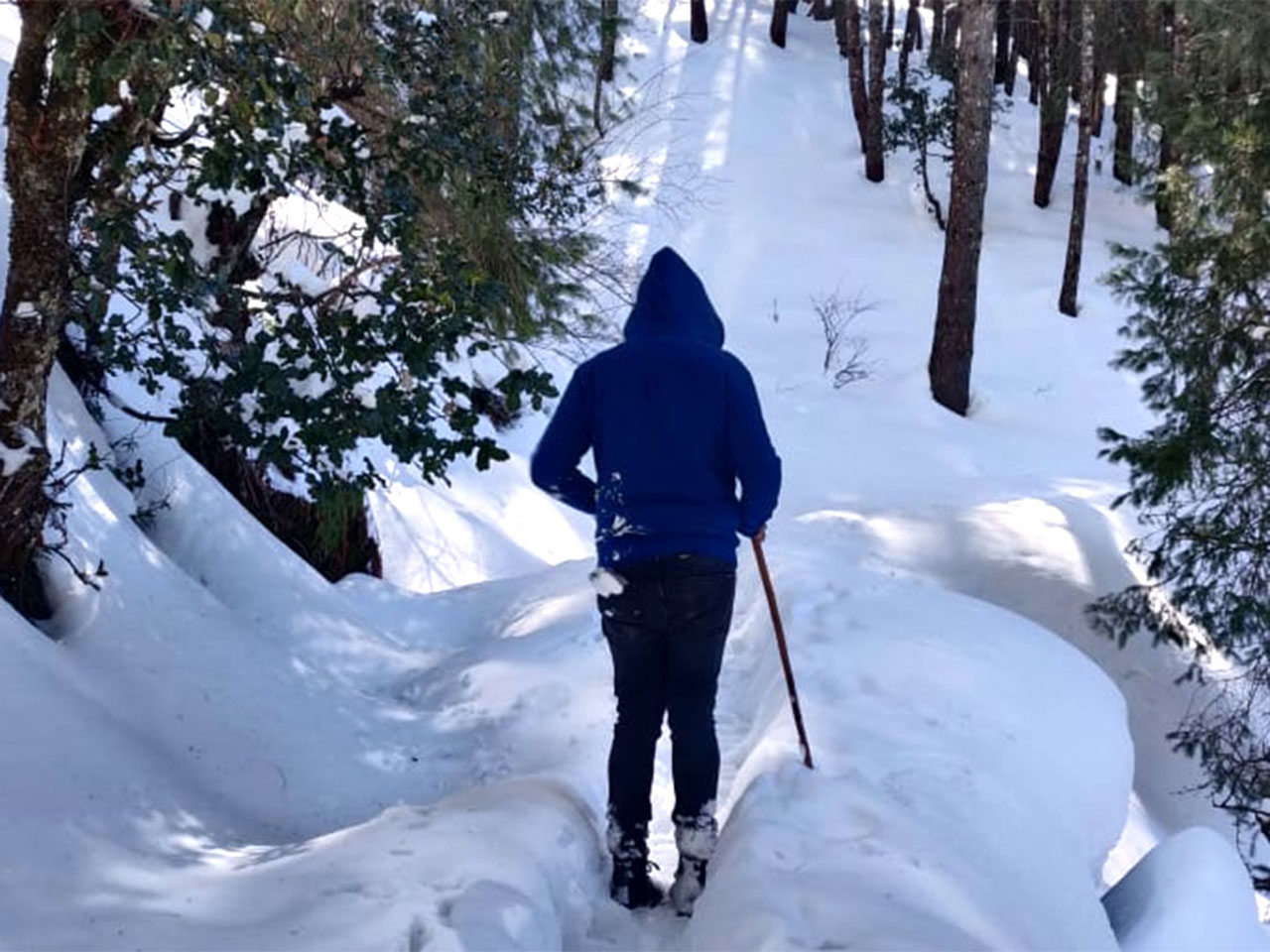Availability
Please email us your travel plans at sales@vibgyorhotels.com. We will respond to you via email to confirm your requirements, prices and any other requests.
















Please email us your travel plans at sales@vibgyorhotels.com. We will respond to you via email to confirm your requirements, prices and any other requests.
We are sorry, this accommodation is not available to book at the moment
Only 460 kms from Delhi. Jakhol village is located at a distance of 22 kms from Naitwar, the entry gate to Govind National Park, Jakhol Village lies in the Mori block of Uttarkashi district of Uttarakhand. A picturesque hamlet surrounded by the Garhwal Himalayas, Jakhol village will make your heart stop a beat. The Traditional wooden carved houses are surrounded by rugged terrain, lush greenery, apple trees and cool breeze. The largest village in the region, Jakhol has a rich cultural heritage and age-old traditions. Agriculture and cattle rearing is the primary occupation of the people.
Marvel yourself with the scenic beauty of the place.
A homestay is a sort of ‘home away from home’ where you get to live with a family for a couple of days and stay in their home, share meals and even help out with daily activities if you’d like. It’s a great way to immerse yourself in local culture.
These homestays are basically village homes, with one of their portions converted into comfortable guestrooms. These have been developed by the locals to generate an alternative and sustainable source of income for themselves.
Homes are made of stone and timber and roofed with slate tiles and most of the families eat vegetarian food on a daily basis, as meat is hard to get in such a remote region. You will also find a common toilet (western style) in most homes. The family will do their best to make you feel at home and will provide you with the basic but delicious meals and sufficient bedding to keep you warm at night.
Most travellers who have been to this region recommend staying with a local family in order to learn about their ancient, cultural lifestyle, which interestingly has not changed for more than a thousand years. Another reason for this recommendation is the scenic vistas one can enjoy from these homestays, especially the fertile green crops with snow-clad mountains.
The guestrooms on offer at these homestays are kept properly clean, brightly coloured and decked with local handicrafts. They feature traditional type wooden bed with comfortable mattresses that are placed on the wooden bed. The blissful feeling of waking up and looking at the beautiful environs outside simply cannot be described in words.
Since these homestays are isolated rural homes, much should not be expected in terms of modern comforts; amenities are more of basic and minimal nature. A bucket of hot water is provided for bathing while toilets are supposed to be shared with the host family. Laundry and telephone services may or may not be available, while electric supply tends to be irregular.
Electricity supply tends to be irregular, offers limited power for charging phones and other necessary equipment. Please carry a handy flash light/torch with extra batteries. However, they do provide candles and solar torches for your comfort though.
Carrying your own towels, soaps and other toiletries will help us avoid the wastage of gallons of water which goes into washing, and in minimizing the use of chemicals in the form of washing powder etc.
There are no TVs in the rooms, but there is plenty of natural beauty around to keep you entertained. Wifi is not available.
Houses are usually built in stone and timber and roofed with slate tiles. It is usually a two or three storey structure with a linear arrangement of one to four rooms on each floor and is typically sited on a terraced piece of land along the contours of the hill. In many villages in Uttarakhand, due to low temperature range, the housing and other buildings of socio-cultural values are generally shaped like pagodas or have sloping roofs.
The common building material used under construction includes wood (generally deodar, due to its abundance and durability), plain stones and other locally available materials like mud and stone slates. One of the important aspects of architecture in the area is the wooden carvings and the slate laden gabled roofs.
The months from March to June and September to November are the most pleasant, with sunny days and cool nights. The winter months from December to February are cold and you have experience the heavy snowfall.
Another wonderful reason for staying with the locals is that one gets to eat the delicious home-cooked food. The culinary tradition of Tons Valley is deep-rooted in growing food organically and most of the recipes use items that are either found naturally in the Himalayas or are cultivated locally. Tons Valley food is very simple but extremely nutritious. For generations people here have mastered the skill of bringing the bio-diversity of the Himalayan eco-system to their plates. Using the medicinal herbs and spices found here, their cuisine has evolved into a perfect blend of taste and nutrition.
Meals will be served in the host kitchen in Indian way of sitting on the floor.
Wastage is minimized as much as possible; biodegradable waste is used to make compost for vegetables and herbs organically grown on the land, while non-biodegradable waste is recycled through the local rag pickers.
April to June & Sept: Cottons with light woollens.
July & August: is a monsoon season hence travelling to this area is closed for outsider due to landslide
Oct to March: Heavy woollens
Sept to Dec: 10 to 20 degrees Celsius.
January to March: -5 to 20 degrees Celsius.
April to July: 15 to 30 degrees Celsius
As a guest at these homestays, one can get involved in the day-to-day activities of the villagers, such as farming and animal herding. Those interested can also take cooking classes from the homemakers.
What are the available communication facilities in this region?
For people who want to use their mobile phone, only BSNL/MTNL works in some places in . Jaunsar-Bawar (Tons Valley) region and some villages and places have no connectivity at all. It is advisable to purchase and activate your number before your trip.
Are there ATM’s in Ton Valley? Can I swipe my card at homestay/hotel?
Only cash is accepted at the homestay & Hotel. The nearest ATM is located in Mori (36 km). Hence carry sufficient cash with you during the tour.
What about toilets & bathing? And how does one use them?
On request, a bucket of hot water is provided for bathing while toilets (English style) are supposed to be shared with the host family. Normally, Bathing area & toilet are on the ground floor of the house (not attached with the room).
Delhi - Muzaffarnagar - Roorkee - Haridwar - Rishikesh - Dehradun - Mussoorie - Nainbhag - Damta - Naugaon - Purola - Jarmola - Mori - Naitwar - Jakhol.

Govind Wildlife Sanctuary or Govind Pashu Vihar National Park and Sanctuary is located in the Uttarkashi district of Uttarakhand.
It was established on 1st March 1955. It spreads over an area of 957.969 sq km. with a varying altitude of 1300 mt to 6323 mt. Govind National Park is an intriguing protected area in Uttarkashi district of Uttarakhand. The park is considered as one of the most exotic national parks in Garhwal region. The majestic and snow covered mountains like Black peak, Bandar Punch and Swarg Rohini make the landscape breathtaking for all those wildlife enthusiast
The park creates an upper water catchment of River Tons. Tons river is significant tributary of Yamuna River and reaches the upper stretches of Garhwal.
Jakhol Dev kyara Trek has been declared as the ‘Trek of the Year- 2019’ by Uttarakhand Tourism Board. It is one amongst the very majestic trekking expedition in the middle of the green meadows of the Himalayas. It is one of the most beautiful valleys in the Western Himalayas.
The climb to the peak of Kedarkantha starts from Sankri or Kotgaon village. Kedarkantha trek gives you the unsurpassed beauty, magnificent views of charming villages, meadows, snow paths, dramatic landscape dotted with lovely lakes, mountains, tranquil rivers and the great Himalayan peaks.
Har Ki dun, the hanging valley of gods is a treat for trekkers. This moderate trek takes you to one of the least explored regions of Garhwal. The beautiful scenery and the glistening snow clad Swargarohini peak are the main attractions. As Harkidun falls within the Govind Pashu Vihar National Park and Wildlife Sanctuary, chances of seeing wildlife here are very bright.
A place where you are one with nature – a pristine, tranquil and peaceful location far from the crowd. It offers a spectacular 360 degree view of entire Jakhol, Sankri, Sunkundi village and Kedarkantha peak. It is believed that every wish is fulfilled by coming here.
The trek provides a great opportunity for trekkers to see the scenic beauty and experience the life of remote villages. Baraadsar Lake is located at a height of 4300 m between Rupin and Supin valleys.
